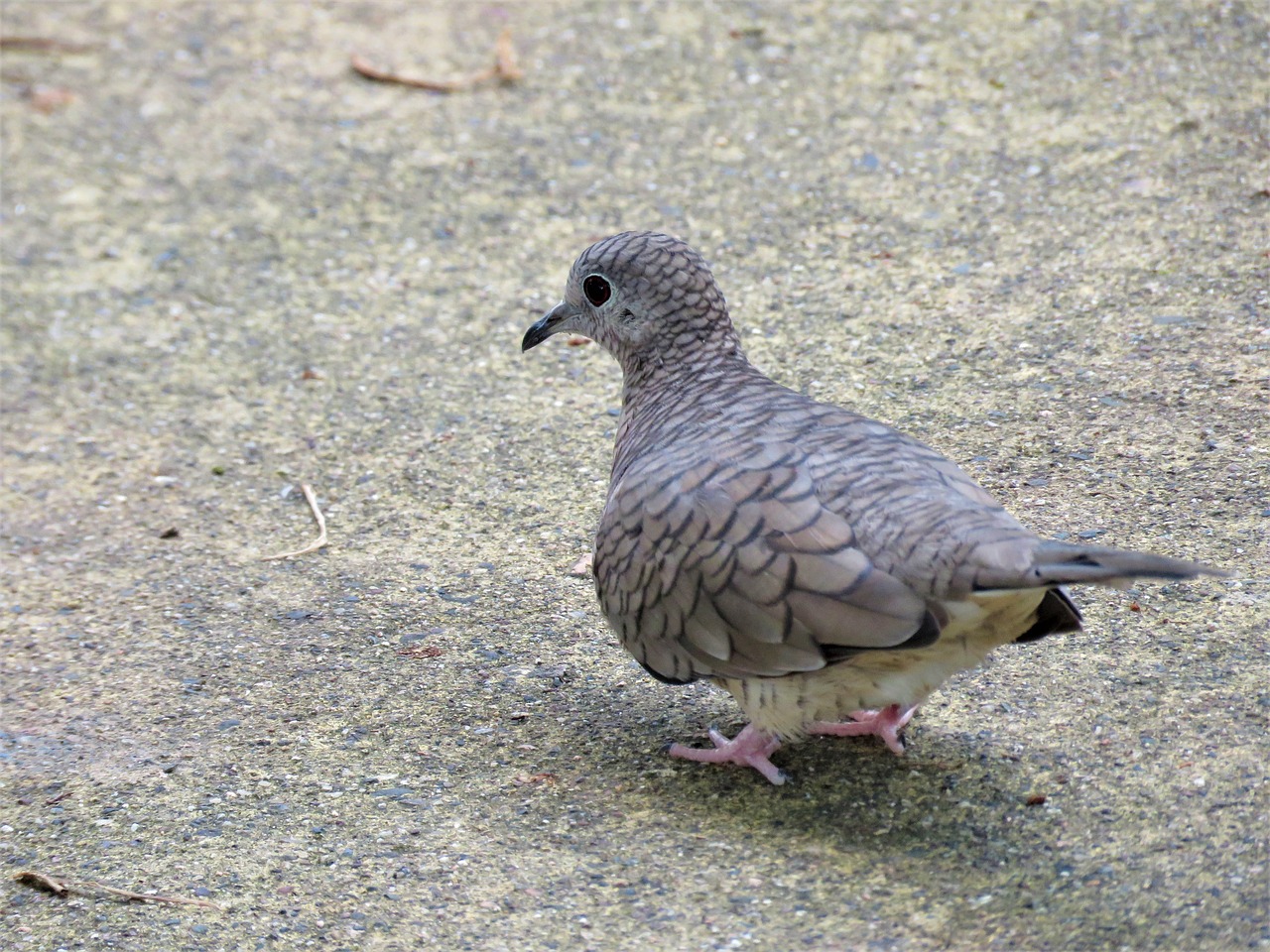Inca Dove. Photo public domain.
Inca dove Columbina inca
The cooing of doves permeates most of Texas, particularly in the fall. In fact, once while working for the Temple Daily Telegram, the publisher called a special reporters’ meeting because the owner of the paper had driven through so many flocks of doves on her way to work that she demanded a front page story on why so many doves were descending on the Hill Country.
Texas is home to eight dove species, and only three are protected from hunting. Among the three is the Inca Dove. Austin’s most well-known doves are the White-winged Dove and the Mourning Dove. The Inca Dove, however, can be spotted year-round in more urban and suburban areas, thickets, woodland edges, and savannas. The Inca Dove calls the southwest home, but in recent years, this dove has expanded to the north and is now being seen as far north as Colorado, perhaps due to increased human settlement.
Inca Doves have a striking scale pattern and a pale sandy color that makes this bird stand apart from other ground doves. This scaled pattern allows the dove to blend in with either its suburban or desert habitat. In flight, however, the Inca Dove makes a show flashing rufous underwings and sporting long, white-tipped tail feathers. When this bird does take flight, the wingbeats sound similar to the rattle of a rattlesnake.
They generally avoid forested areas, seeking bare ground with short vegetation instead. They eat almost exclusively seeds. They walk along the ground picking at seeds from grasses, flowers, and shrubs. They also eat grains and seeds from bird feeders including black oil sunflower seeds, cracked corn, millet, and nyjer seeds.
Inca Doves nest in trees and shrubs as well as on utility poles, houses, and other structures. Nest height ranges from half a foot to 50 feet above the ground. The male gathers grasses and twigs for the female. He walks up to her with pieces of nesting material in his mouth, climbs up her back, and passes it to her or lays it by her side. She then arranges the grasses and twigs into a nest and occasionally collects nesting material herself.
The eyes of an Inca Dove may give away what it is feeling. Inca Doves have red eyes, but their red eyes become even brighter when they are threatened by an intruder.
Inca Doves, like other doves, feed their young “pigeon milk” or “crop milk.” Both males and females produce this substance in their crops (the pouch just above the stomach that birds use to store food). The walls of the crop swell with fat and proteins until the cells in the crop wall begin shedding, producing a nutritious, milky-colored secretion. Despite its appearance, it’s not related to the milk produced by mammals.
Compiled by Lindsey Hernandez.
Sources include: eBird, All About Birds, and Texas Parks and Wildlife Department.




